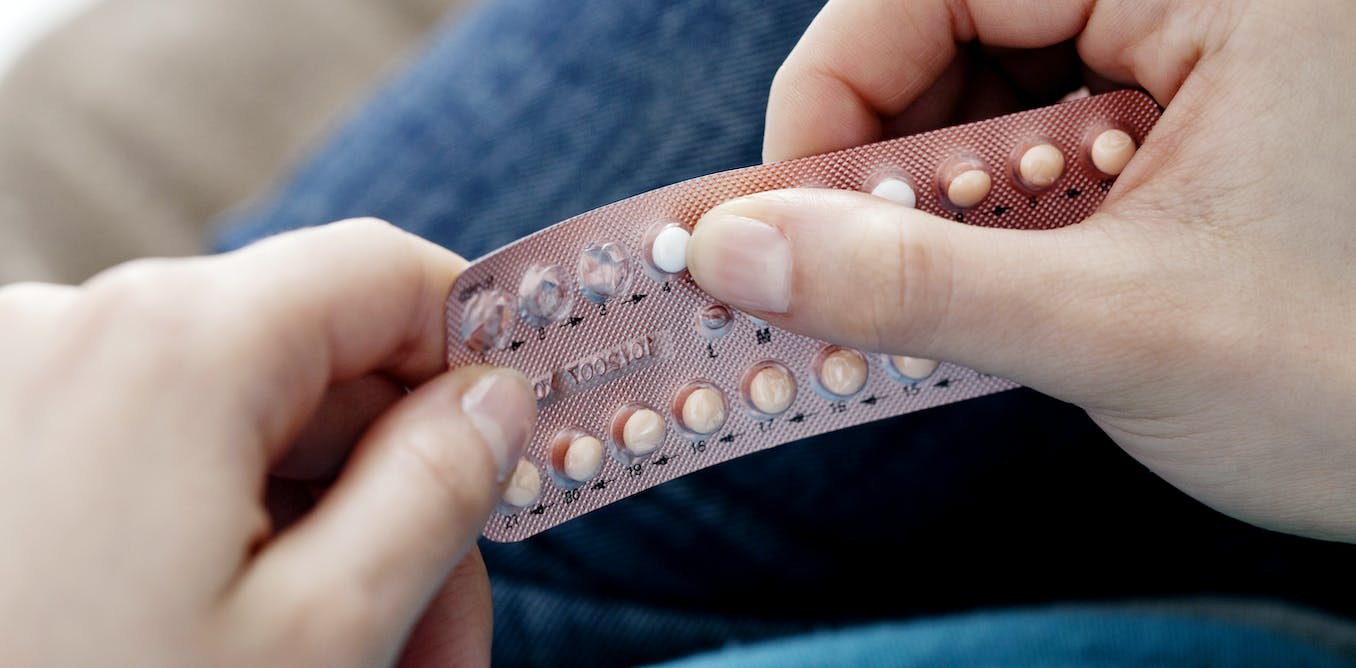The amount of oestrogen the birth control pill currently contains is already substantially lower than it was when the pill was first licensed more than 60 years ago. But a new paper has suggested that the doses of both oestrogen and progestogen in the pill could be significantly reduced and still work to prevent pregnancy.
Given the many side effects that can come from using contraceptives, researchers wanted to know whether birth control could still work even if hormone dosages were lower.
To conduct their study, the team of researchers developed a very complex mathematical model using data on hormone levels from 23 women with normal menstrual cycles. They were then able to use this information to calculate what effect altering the timing and doses of certain hormones could have in preventing ovulation.
The model predicted that giving a very short, moderate dose of oestrogen around the seventh day of a 28-day cycle – either with or without a low dose of continuous progesterone – was capable of stopping ovulation. This meant that the dose of oestrogen needed to stop ovulation could be reduced by over 92%, while the dose of progesterone in progestogen-only methods could be reduced by 43%.
Hormone dosages
As exciting as these findings may be, there are a couple of major caveats to this research when it comes to real-world application.
First, it’s important to understand that these findings are based on computer modelling – not real-world data. Most new contraceptive methods are tried first on animal models, then in human volunteers. It’s very possible that these computer models will reflect real-world results, but much more research will be needed in order to understand whether very precise low-dose hormonal contraceptives actually work in humans.
Second, the model was built using a simulated 28-day menstrual cycle. But menstrual cycle length can vary greatly between women. As such, it’s uncertain whether these results will be true for women who have different menstrual cycle lengths.
Another limitation of the model that the researchers point out is that reducing contraceptive hormone levels only appears to work for about four simulated menstrual cycles. After that, the model predicts that ovulation will start to happen again.
This is because stopping ovulation in the previous cycle adjusts the length of the next cycle and the hormone levels associated with it. This in turn affects the time that the next dose needs to be given. So, for very low doses to work in real life, it’s likely that women would need to constantly adjust the time they take hormone dosages to keep the contraceptive working.
Kaspars Grinvalds/ Shutterstock
The researchers suggest that if a device could constantly sample the blood of the user and adjust the timing of a dose of oestrogen each month, this would overcome this problem and the problem of varying cycle lengths between women. Such a device does not yet exist, however.
The oestrogen found in current combined contraceptive methods (such as the pill and patch) also helps to regulate bleeding, and is taken for at least 21 days in every month. We don’t know what effect taking a lower dosage of oestrogen during a specific, much shorter time of the month would have on bleeding in the rest of the menstrual cycle. This is something that future studies will need to investigate.
The future
Despite these caveats, these results are exciting because of the benefits that lowering hormone doses could have for those who use birth control.
When the combined contraceptive pill was first introduced in the 1960s, doctors quickly realised that the high doses of oestrogen in the pill were causing clots, strokes and heart attacks in some women. This led to a reduction of the amount of oestrogen the pills contained.
But although hormone levels are significantly lower now than they were in the past, a small number of women still experience harmful side effects when they take birth control, such as clots in the leg, largely because of the oestrogen it contains. Women at increased risks of clots, strokes or heart problems cannot use contraceptive methods involving oestrogen at all.
While many factors contribute to a woman’s risk of harmful side effects from the oestrogen and progestogen found in contraceptives (such as genetics, weight and whether she smokes), it’s generally assumed that some of this risk is due to the level of these hormones that contraceptives contain. That means that lowering the dose of hormones in contraceptive methods has the potential to reduce the small risk of harmful side effects in some women.
This is why the suggestion that the doses of both oestrogen and progesterone could be much lower and still stop ovulation is so interesting. If future research shows these findings to be true in human trials, the next step would then be developing technology that could help ensure women receive the precise hormone dosages at just the right time. This would ensure that her contraceptive worked but with the possibility of minimising the risk of side effects.




